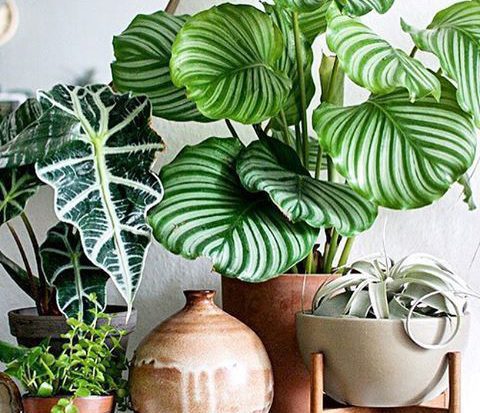Let’s talk about how and when to water your majesty palm, and which type of water is the healthiest choice.
Majesty palms are a beautiful way to bring a tropical, exotic vibe into your space, and one of the most important elements of caring for one (and any plant) is proper watering.
If you water too little or not often enough, you may find your palm strands may yellow, dry out, and even fall off. If you water too much or too often, you could wind up with root rot!
Luckily, majesty palms aren’t that fussy, but they still have specific watering preferences that can mean the difference between a beautiful, thriving palm and one that’s barely holding on.
How and When to Water Your Majesty Palm
When to Water Your Majesty Palm
Rather than prescribing a set schedule to water your majesty palm, we recommend taking cues from your plant so you can tell when it’s ready for water.
There are a few different ways to test this. First, you can stick your finger in your palm’s soil to feel how damp the soil is. When the top inch or two of soil feels dry, it’s time to water!
Our preferred method is to use a moisture meter to take an actual reading of your soil’s moisture level. This method also allows you to test the moisture level of the actual root ball, not just the top few inches of soil. The root ball can compact and hold onto water even if the top few inches feel dry, so this is especially helpful for preventing overwatering and root rot.
To use a moisture meter, insert the sensor into the soil about halfway down between the base of the plant and the side of the pot. You’re aiming for the center of the root ball. When your meter reads about a 3 or 4, it’s time to water!
This is the soil meter we recommend. It also measures light and soil pH, so it’s a great bang for your buck!
Whether you use the finger test or a moisture meter, you’ll probably end up watering your majesty palm every 7-10 days, but you might go as long as 14. The time between waterings can vary depending on the season and climate. Majesty palms will dry out faster in warmer, drier climates and dry out slower in cool, damper ones. (This is the biggest reason why we recommend taking cues from your plant instead of sticking to a schedule.)
Whatever you do, do not let the soil dry out completely, or you may have an underwatered majesty palm on your hands!
How to Water Your Majesty Palm
When your majesty palm decides it’s ready for a drink, simply add water to the soil until it just starts to drain out the bottom of the pot.
By the way, your pot and soil should drain well! If your pot doesn’t have drainage holes, get one that does. If your soil is compacted and won’t absorb water, repot the plant or at least aerate the soil so the water can sink in.
That’s it! You can leave it in the sink to drain or empty the drainage tray immediately.
What kind of water should you use?
Some house plants prefer distilled water or rainwater over plain tap water due to chlorine and other materials used in the public water supply. Majesty palms can still be healthy when you water with tap water, but you may want to switch to distilled to prevent browning, crispy spots on the ends of your fronds.
You can also leave tap water out overnight, uncovered to let some of the chlorine evaporate before giving it to your plants.
What if you overwater your majesty palm?
If you notice that your root ball is soaked or if you see dark, squishy stems or dark spots on the fronds, your palm is probably overwatered and possibly experiencing root rot.
If this happens, repot the plant into fresh, clean soil and a clean pot. Make sure to remove any dark, squishy roots. Go a little easier on the water after that, and consider using a root rot treatment when you do water to help roots heal and regrow.
If you are still getting used to your majesty palm’s water preferences, err on the light side. Your plant may get some dry, crispy leaves if you underwater, but it’s always easier to give your plant a little more than to treat root rot!
Majesty palms are fairly easygoing and simple to water. Try these tips to grow a beautiful, thriving plant!




